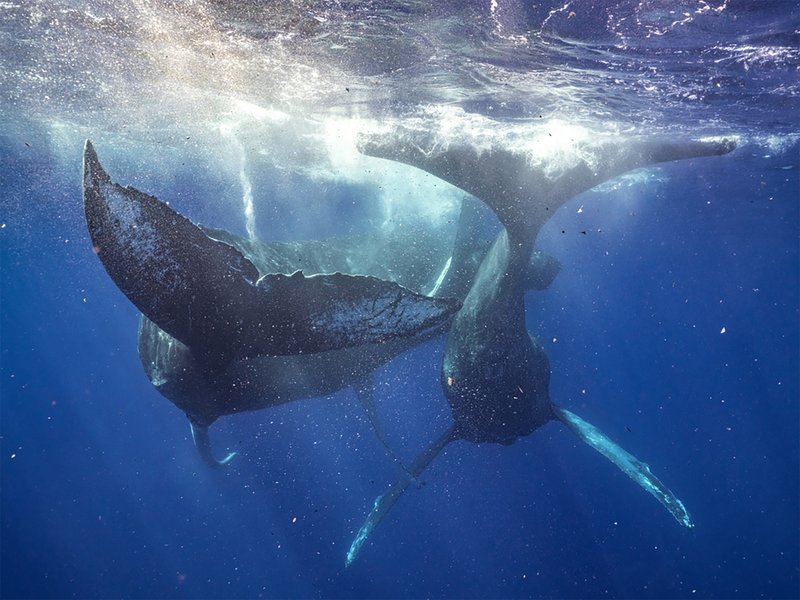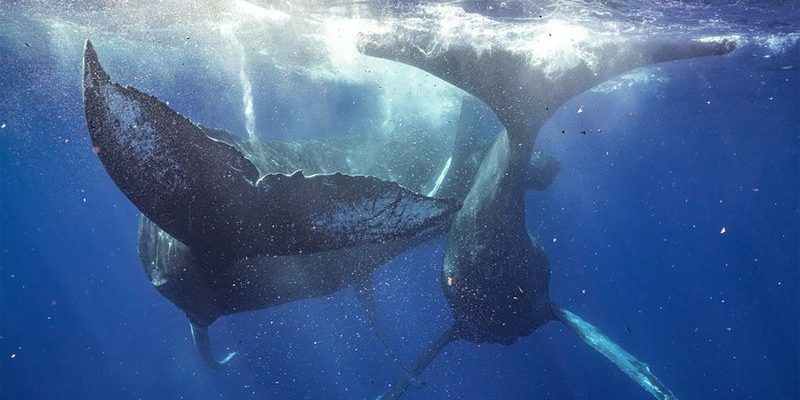
In the breeding season, humpback whales embark on long migrations, traveling thousands of miles from feeding grounds in colder waters to the warm, shallow breeding grounds in tropical areas. This journey isn’t just about finding a mate; it’s also about ensuring the safety and health of their calves. Let’s dive deeper into the enchanting world of humpback whale reproduction, exploring everything from their courtship to calf-rearing.
Understanding Humpback Whale Mating Behavior
Humpback whale mating rituals can resemble a grand underwater ballet, where males often perform elaborate displays to attract females. These displays include breaching, tail slapping, and singing. You might be wondering why singing is essential. Well, the songs of male humpbacks can travel for miles underwater, acting like a melodic advertisement for potential mates.
During mating season, which typically occurs from late fall to early spring, males will gather in groups called “competitive groups.” They engage in fierce competition to win the attention of a female. Imagine a race where the contestants are trying to outshine each other with their best moves and songs. The strongest and most skilled individuals often secure mating opportunities.
Interestingly, these whales are not monogamous. A female might mate with several males during a single breeding season. This behavior allows for genetic diversity among calves, increasing their chances of survival. It’s like having a backup plan; if one mating doesn’t result in a healthy calf, there’s a chance another will.
The Humpback Whale Gestation Period
Once a female humpback whale has mated, the gestation period begins. This period lasts about 11 to 12 months, which might not seem long given the size of these animals, but it’s crucial for developing a healthy calf. Throughout this time, the mother makes sure to store enough energy for both herself and her growing baby.
During pregnancy, you can often spot pregnant females spending more time in safe, shallow waters. This preference for warmer, calmer areas reduces the risk of predation and minimizes stress. It’s similar to how humans sometimes seek comfort during pregnancy, making choices to ensure their unborn child’s safety.
After the long gestation period, the female gives birth to a single calf, usually weighing around 2,000 to 3,000 pounds and measuring about 10 to 15 feet in length. This birth typically occurs in the warm waters where the mother feels most secure. It’s a remarkable event, as the mother has invested almost a year nurturing the calf before it even takes its first breath.
Nurturing the Calf: Early Life of Humpback Whales
Once the calf is born, the nurturing process begins immediately. The mother is highly attentive, guiding her newborn to the surface for its first breath. Think of it as a rite of passage into the world. During the first few months, the mother is the calf’s sole source of nourishment, providing it with rich, fatty milk that is crucial for growth.
Calves nurse for about 6 to 12 months, but they start to learn to swim, dive, and even feed themselves during this time. The mother often takes her calf on short journeys to teach it essential survival skills. You could say she’s preparing her little one for the big ocean out there, akin to how a parent shows a child how to ride a bike before letting them venture alone.
Besides providing food, the mother also establishes a strong bond with her calf. This bond is crucial for the calf’s emotional and physical development. They communicate through sounds and body language, strengthening their connection. You might picture them playing together, breaching the ocean surface, which not only builds the calf’s strength but also helps in recognizing their mother’s calls amidst the vast waters.
Threats to Humpback Whale Reproduction
Despite their size and strength, humpback whales face serious threats that impact their reproduction. Changes in climate, pollution, and fishing practices can reduce the availability of food, making it harder for pregnant females and nursing mothers to thrive.
Additionally, human activities like shipping and boat traffic can disturb their mating and birthing grounds. The noise pollution from boats can disrupt the songs of males, which are crucial for attracting females. It’s a bit like trying to hear your friend at a crowded party; all the background noise can drown out the important sounds.
Another significant concern is the threat of entanglement in fishing gear. This unfortunate occurrence can lead to injury or even death, further threatening the population. As these whales continue their epic migrations, we must find ways to protect their habitats and ensure they can reproduce safely.
The Role of Conservation in Humpback Whale Reproduction
Conservation efforts play a vital role in preserving the humpback whale population and ensuring successful reproduction. Organizations around the world are actively working to protect their habitats, regulate shipping traffic, and minimize pollution. It’s like creating a safe playground for these magnificent creatures—free from stress and threats.
One significant effort includes the creation of marine protected areas where these whales can safely breed and give birth. These areas are crucial for maintaining healthy populations and providing safe havens for mothers and calves. Researchers are also studying migration patterns to understand better how to protect critical habitats.
Moreover, public awareness and support for conservation initiatives can lead to better laws and protections for humpback whales. When people understand the challenges these creatures face, they may be more inclined to advocate for change. Each voice can contribute to a larger movement, ensuring that future generations can marvel at the beauty and grace of humpback whales.
The breeding and reproduction of humpback whales is a captivating process that showcases the complexity of life in the ocean. From their elaborate mating rituals to the nurturing of calves, these whales embody resilience and grace. Understanding their reproductive habits not only deepens our appreciation for these majestic creatures but also highlights the importance of protecting their environment.
So, the next time you hear a humpback whale’s song or see one breaching the water, remember the journey they undertake to reproduce and raise their young. It’s a beautiful dance of life that deserves our attention and protection. As we learn more about these incredible animals, let’s commit to preserving their habitats and ensuring they continue to thrive in our oceans for generations to come.

